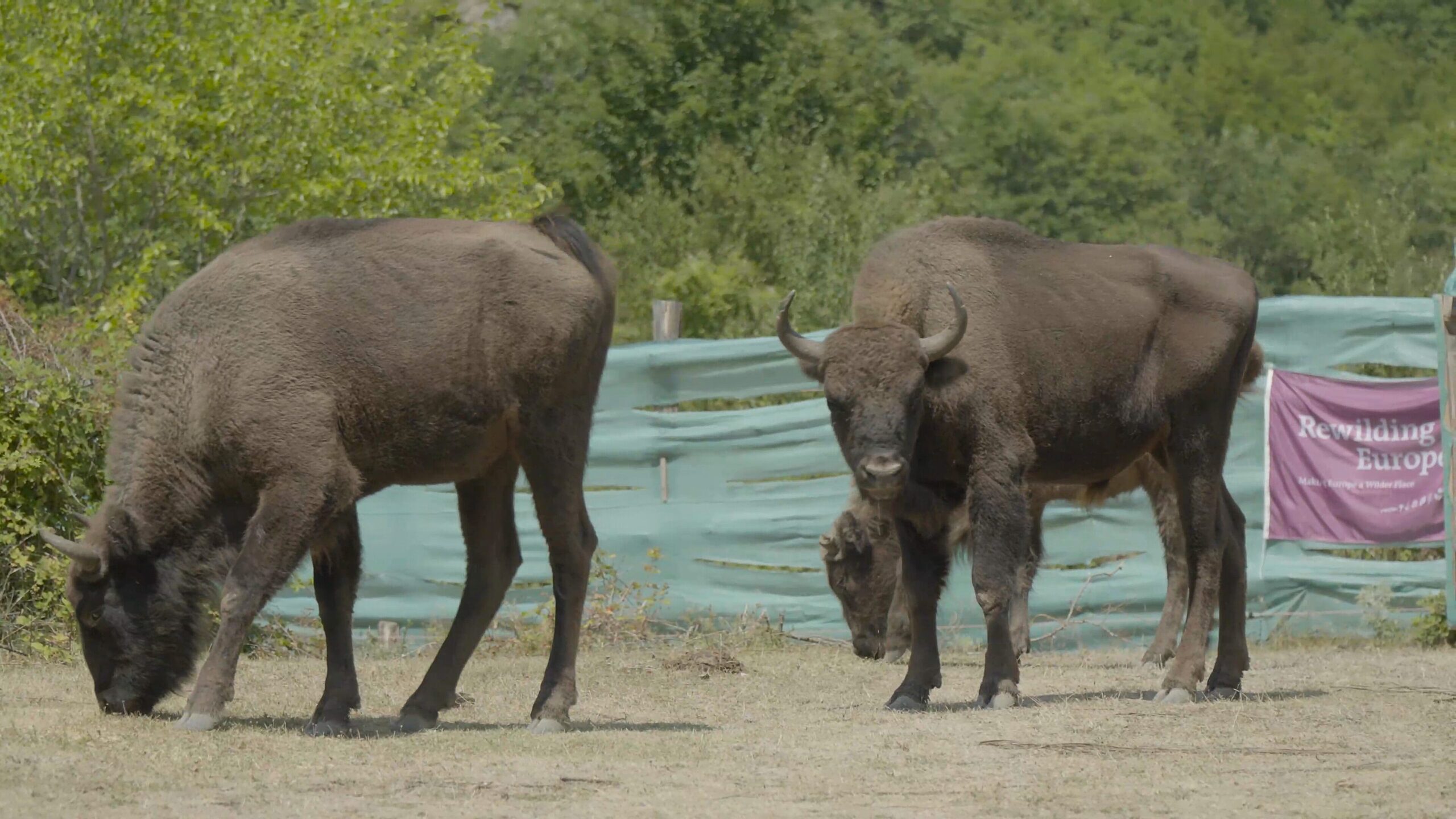Nine European bison – seven females and two males – were released into the wild in the Zhenda area, part of the 3,800-hectare Zhenda rewilding site in the Eastern Rhodope Mountains near Kardzhali. The initiative is led by the Rewilding Rhodopes Foundation, in partnership with the Zhenda State Hunting Enterprise and with the support of international partners.

The release supports a broader vision of ecological restoration in the region. Zhenda rewilding landscape covers roughly 3,800 hectares within a broader 250,000-hectare rewilding landscape in the Northwestern corner of the Eastern Rhodope. Its terrain includes mountainous forests interspersed with open areas, and it is host to a rich wildlife community. Zhenda is home to a diverse range of wildlife species. In terms of herbivores, red and fallow deer, chamois, and wild boar are all present, while predators include wolves, foxes, jackals and brown bears.
Before their release, the bison underwent a period of acclimatization in an enclosed area. Now in the wild, the animals are quickly exploring their new habitat, with their movements being monitored through GPS collars. “Our goal is to establish a sustainable, self-reproducing bison population in this region. The animals are already showing promising signs of adaptation,” said Andriana Trifonova, Team Leader at the Rewilding Rhodopes Foundation.
The European bison is the largest land mammal in Europe and a species that disappeared from the wild in Bulgaria centuries ago. Its return plays a key role in supporting healthy ecosystems, as its grazing helps create a variety of habitats that benefit many other plant and animal species.
The release near Zhenda is part of a broader initiative that began in 2013, which has already resulted in the successful establishment of a free-ranging bison population of over 20 animals—including wild-born calves—around the Studen Kladenets reservoir.
The coming months will be crucial for monitoring the group’s adaptation and social behavior. If successful, the animals are expected to begin reproducing in the wild in the near future.